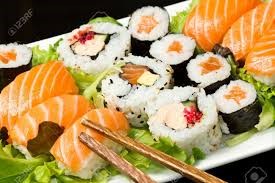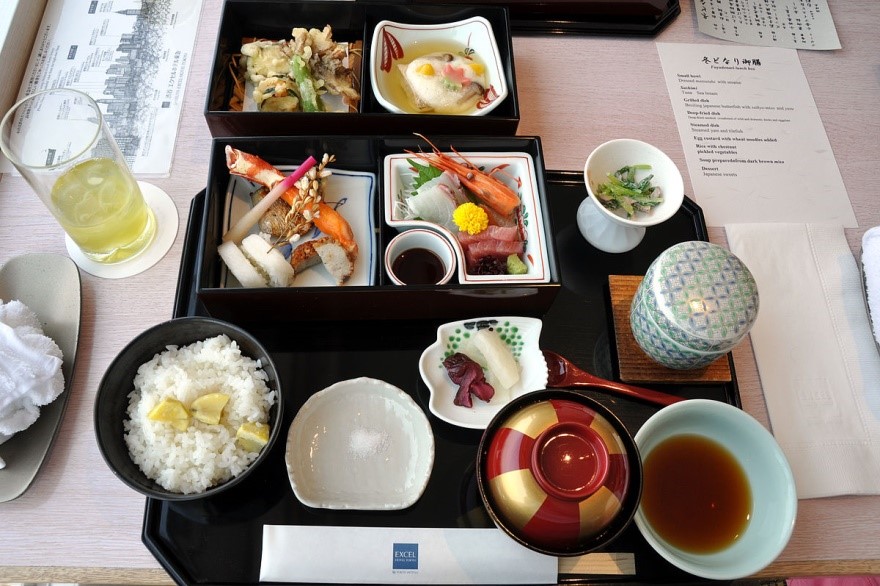JAPANESE FOOD:The traditional cuisine of Japan
JAPANESE FOODS
03.10.2017
Japanese cuisine encompasses the regional and traditional foods of Japan, which have developed through centuries of social and economic changes. The traditional cuisine of Japan is based on combining the staple food, which is steamed white rice or gohan, with one or several okazu or main dishes and side dishes; there is an emphasis on seasonal ingredients. Side dishes often consist of fish, pickled vegetables, and vegetables cooked in broth. Seafood is common, often grilled, but also served raw as sashimi or in sushi. Seafood and vegetables are also deep-fried in a light batter, as tempura. Apart from rice, staples include noodles, such as soba and udon. Japan also has many simmered dishes such as fish products in broth called oden, or beef in sukiyaki and nikujaga.

Rice is served in its own small bowl, and each course item is placed on its own small plate or bowl for each individual portion. This is done even at home. It contrasts with the Western-style dinners at home, where each individual takes helpings from the large serving dishes of food presented at the middle of the dining table. Japanese style traditionally abhors different flavored dishes touching each other on a single plate, so different dishes are given their own individual plates as mentioned, or are partitioned using leaves, etc. Placing okazu on top of rice and “soiling” it is also frowned upon by old-fashioned etiquette. Though this tradition originated from Classical Chinese dining formalities, especially after the adoption of Buddhism with its tea ceremony, and became most popular and common during and after the Kamakura period, such as the Kaiseki. Japanese cuisine keeps such tradition still, whereas in modern times such practice is in sharp contrast to present day Chinese cuisine, where placing food on rice is standard, However the exception is the popular donburi.





